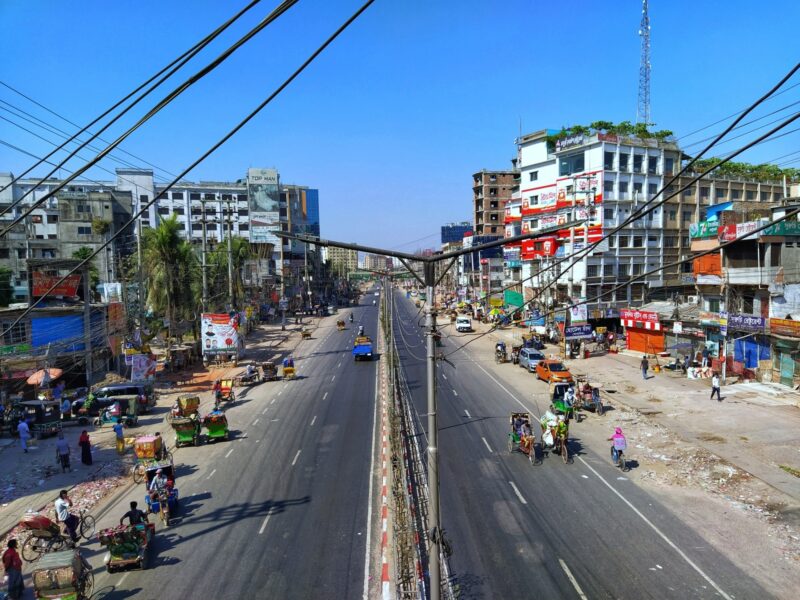South Asia is paying a high price for its dependence on imported fossil energy
Share

Following the pandemic and Russia’s illegal invasion of Ukraine, the global fossil fuel market is extremely volatile, leaving South-Asian countries to pay exorbitant prices to secure their energy supply.
In most of the South Asian countries, depleting domestic reserves of gas and coal are the main reason for the gradual rise of imports. But the pre-pandemic low liquified natural gas (LNG) “spot market” price also incentivised countries in the region to import more LNG through the spot market which, in turn, allowed them to reduce spending on energy subsidies and to lower power tariffs.
Bangladesh, Pakistan and India buy more than 50% of their LNG through the spot market (with the rest coming through long-term contracts). But this has backfired completely in the current context.
The extent of the crisis: power outages, tariff hikes and energy subsidies
In Pakistan, the unaffordability of LNG and coal has led to power outages and a doubling of the power tariff which again caused electricity to become more expensive for households and industry. With LNG becoming more expensive and out of reach, Pakistan is considering more oil imports to substitute gas demand.
In November last year Bangladesh cancelled a spot market tender due to the high gas price, which caused a severe energy shortage in the country. To cover this energy shortage, this year Bangladesh is being forced to buy LNG at a price five times higher than it was in early 2020. The government has had to triple energy subsidies and is expected to have to double them again in the upcoming 2022-2023 budget. To deal with the high price of imported LNG, the Bangladesh Energy Regulatory Commission has recommended increasing electricity rates by 58%.
Although much focus in the region is on LNG, the hike of the coal price is also playing an important role in the ongoing energy crisis in South Asia. India is one of the largest global importers of coal, and Pakistan imports nearly 70% of its thermal coal.
The high price of coal imports is already threatening financial sustainability of Pakistan’s coal power plants by putting the power sector into a “circular debt”. Circular debt is a Pakistan-specific situation that occurs when one entity facing problems in its cash inflows holds back payments to its suppliers and creditors and continues to increase the total debt burden.
The high price of imported coal is one of the main factors behind the on-going power crisis in India. On the other hand, Bangladesh has scrapped plans for 10 new coal plants due to the high price of imported coal.
Spill-over effects
The exorbitant cost of LNG has also started to impact non-power sectors. Trade associations across Bangladesh have raised concern about the “suicidal” impacts of power tariff hikes for sectors such as the garment manufacturing industry, and the economy as a whole. In Pakistan, power outages due to LNG supply shortage have caused a loss of textile exports worth USD 250 million.
The ongoing power outages in India and Pakistan are particularly difficult for small industries that had only just begun to recover from the economic impact of the pandemic. Cement and steel plants in Pakistan are either operating at significantly reduced capacity or shutting down plants on a temporary basis because of the disruption in power supply.
The fertiliser industry which is hugely important for largely agrarian India and Pakistan is also suffering because of the high gas price. Indian government has increased fertiliser subsidy by around 75% from 2019-20 level. In Pakistan, supply shortage of gas is resulting in a hike in the urea price and the government was forced to intervene to fix a fertiliser price cap.
Long-term energy security: moving away from imported fossil energy towards renewables
The current experience of South Asia makes it clear that reliance on imported fossil fuels is not helping to alleviate energy poverty nor drive economic growth. On the contrary, it increases countries’ vulnerability and reduces energy security.
The crisis is also exposing the slow progress towards renewable energy in these countries.
Our research shows that renewable energy supports energy security with improved access and affordability. For example, another South Asian country, Nepal – once a power starved nation – is now exporting surplus hydro-electricity to India. Nepal has achieved this by unlocking its immense hydro-power potential and improving the energy system management. Another example, Bhutan has already achieved universal access to electricity for its population with a zero-emissions electricity grid.
To keep the Paris Agreement 1.5oC temperature goal in reach, unabated fossil gas power generation needs to be effectively phased out globally by 2040. The on-going energy security issue related to LNG imports points to the need for an even faster phase-out in these developing countries. Moving away from imported fossil energy will also lead to potential savings on imports and an improved trade balance.
South Asia is one of the most vulnerable regions to climate change impacts but also one with vast untapped renewable energy potential. International support, both technological and financial is instrumental for untapping this potential.
To achieve a global net zero emissions energy transition to limit global warming to 1.5°C is crucial for the region. The transition would bring benefits beyond cutting emissions: renewable energy projects can attract new investment, increase energy security through diversification, enable technological research for higher penetration of renewable energy, and drive sustainable and stable economic growth.












